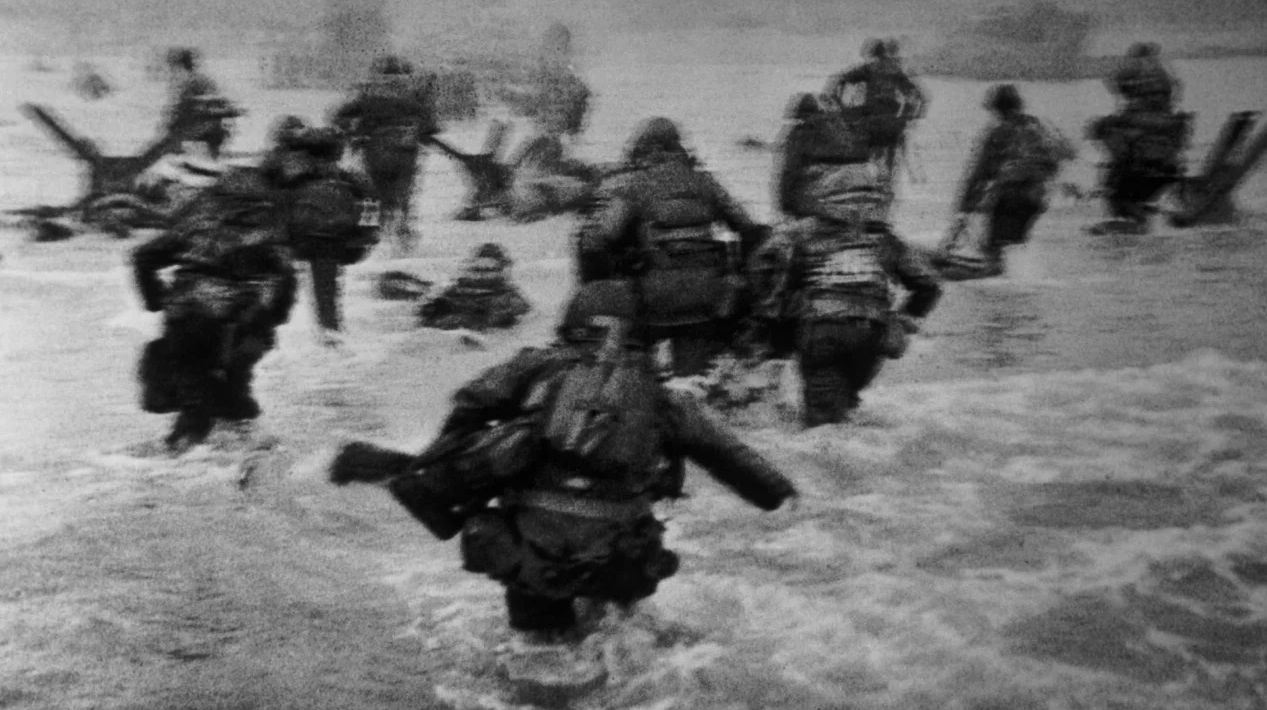RARE! WWII D-Day Omaha Beach Recovered U.S. Infantry Division Inflatable Lifebelt with Display Case (C.O.A. Included)


















RARE! WWII D-Day Omaha Beach Recovered U.S. Infantry Division Inflatable Lifebelt with Display Case (C.O.A. Included)
Comes with a hand-signed C.O.A. and a full historical research write-up.
*Limited Edition of 50*
Own your piece of history today!
Due to an incredibly high demand for display case options we are proud to offer one of our LIMITED EDITION series of HISTORIC DISPLAY CASE EXCLUSIVES. This incredible “Piece of History“ is professionally encased in a glass display case with plush padding and a tightly sealed display case. Each displays features a historical photograph and short description that corresponds to the artifact displayed. This display case measures a perfect 4.25 inches tall x 3.25 inches wide.
This series is a limited edition of 50 pieces, meaning that each “Piece of History” display is unique. The lifebelt artifact you receive may vary slightly from the display shown.
This incredibly rare and very historic piece of WWII history is an original U.S. Infantry Division soldier’s inflatable lifebelt that was recovered from Omaha Beach during Operation Overlord Allied D-Day landings on June 6th, 1944.
The Allied invasion of Normandy, commonly known as D-Day, remains one of the most iconic and significant military operations in history. Among the five landing zones targeted by the Allies on June 6, 1944, Omaha Beach became a pivotal battlefield for the U.S. forces during Operation Overlord. The objectives set for the American troops on Omaha Beach were crucial to the success of the overall invasion. Furthermore, the soldiers' use of inflatable lifebelts played a vital role in mitigating the risks associated with amphibious landings. This essay will delve into the D-Day missions and objectives on Omaha Beach, shedding light on the strategic importance of this operation and the specific measures taken to ensure the safety of the troops.
The D-Day Missions and Objectives on Omaha Beach: Omaha Beach, situated along the coast of Normandy, was one of the most heavily fortified German defensive positions during World War II. The American forces faced daunting challenges as they approached the beachhead, including the rugged terrain, heavily defended bunkers, and a relentless German counterattack.
The primary mission of the U.S. troops on Omaha Beach was to establish a secure beachhead that would serve as a launching point for the subsequent advance inland. This required the successful capture of several key objectives. One such objective was the elimination or neutralization of the German coastal defenses, including pillboxes, machine gun nests, and artillery positions. These fortifications posed a significant threat to the invading forces and had to be neutralized for a successful beach landing.
Another crucial objective was to secure the exits from the beach. The German forces had positioned themselves to disrupt the Allied forces' ability to move off the beach and deploy reinforcements and supplies. The U.S. troops had to clear the exits and establish control over the surrounding areas to prevent German reinforcements from overwhelming them.
Additionally, the capture of several draws or valleys leading from the beach to the bluffs behind was vital. These draws provided the only viable routes for the advancing troops to scale the steep cliffs and gain access to the heavily fortified German positions. Capturing and securing these draws became a pressing objective for the American forces to ensure a successful breakout from the beach and the subsequent advance inland.
Inflatable Lifebelts and Their Significance: The D-Day invasion presented the American troops with numerous hazards, including the potential for drowning upon disembarking from landing craft. To mitigate this risk, soldiers were issued inflatable lifebelts, also known as "Mae Wests". These lifebelts were designed to be manually inflated by pulling a cord, providing buoyancy and assisting soldiers in staying afloat in case they fell into the water.
The inflatable lifebelts played a critical role in the survival of soldiers during the amphibious assault on Omaha Beach. As the landing craft approached the shoreline, the soldiers faced intense enemy fire, which caused many casualties. Some soldiers who were wounded or disoriented fell into the water, potentially risking drowning due to the weight of their equipment or injuries.
The use of inflatable lifebelts provided a crucial safety measure for soldiers in these distressing situations. By offering buoyancy and keeping the soldiers afloat, the lifebelts increased their chances of survival until they could be rescued or reach shallower water. Moreover, the lifebelts enabled soldiers to conserve their energy and focus on reaching the beach rather than struggling to stay afloat. This played a significant role in maintaining morale and combat effectiveness.
The D-Day U.S. landing on Omaha Beach during Operation Overlord was a monumental event that shaped the course of World War II. The missions and objectives assigned to the American forces on Omaha Beach were vital in establishing a secure beachhead and paving the way for the ultimate liberation of Europe. The use of inflatable lifebelts, such as the Mae Wests, played an essential role in ensuring the safety of soldiers during the perilous amphibious assault. Through the valor and determination of the U.S. troops, Omaha Beach became a turning point in the war, demonstrating the resilience and indomitable spirit of the Allied forces in their quest for victory.